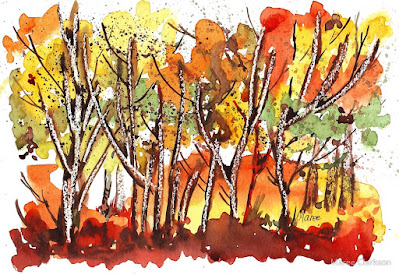W&N watercolour on Bockingford 300gsm
This popular and vigorous succulent has 4 to 8 inches wide, tight
rosettes of flat grey-green leaves that, when mature, form offsets
freely to form large solid clumps 4 to 6 inches tall. It has a branched
arching inflorescence bearing clusters of red and yellow flowers in the
spring and early summer. Plant in full sun, even in hotter inland
gardens, to part sun/light shade in a well-drained soil and water
regularly. Although it is is cold-tolerant, it does not do well in heavy
frosts, therefore most of mine are planted in terracotta pots for easy
winterizing.
This plant is often listed as a species or as E. x
imbricata but is a hybrid cultivar created in the early 1870’s by
Jean-Baptiste A. Deleuil of Marseilles (Rue Paradis) that resulted from
crossing Echeveria secunda with E. gibbiflora ‘Metallica’ and was listed
for the first time in his 1874 catalogue.
It has been argued by some that the correct pronunciation for the genus is
ek-e-ve’-ri-a, though ech-e-ver’-i-a seems in more prevalent use in the US.
Category: Succulent
Family: Crassulaceae (Stonecrops)
Origin: Mexico (North America)
Evergreen: Yes
Flower Color: Red & Yellow
Bloomtime: Spring/Summer
Synonyms: [Echeveria x imbricata]
Parentage: (Echeveria glauca x E. gibbiflora ‘Metallica’)









